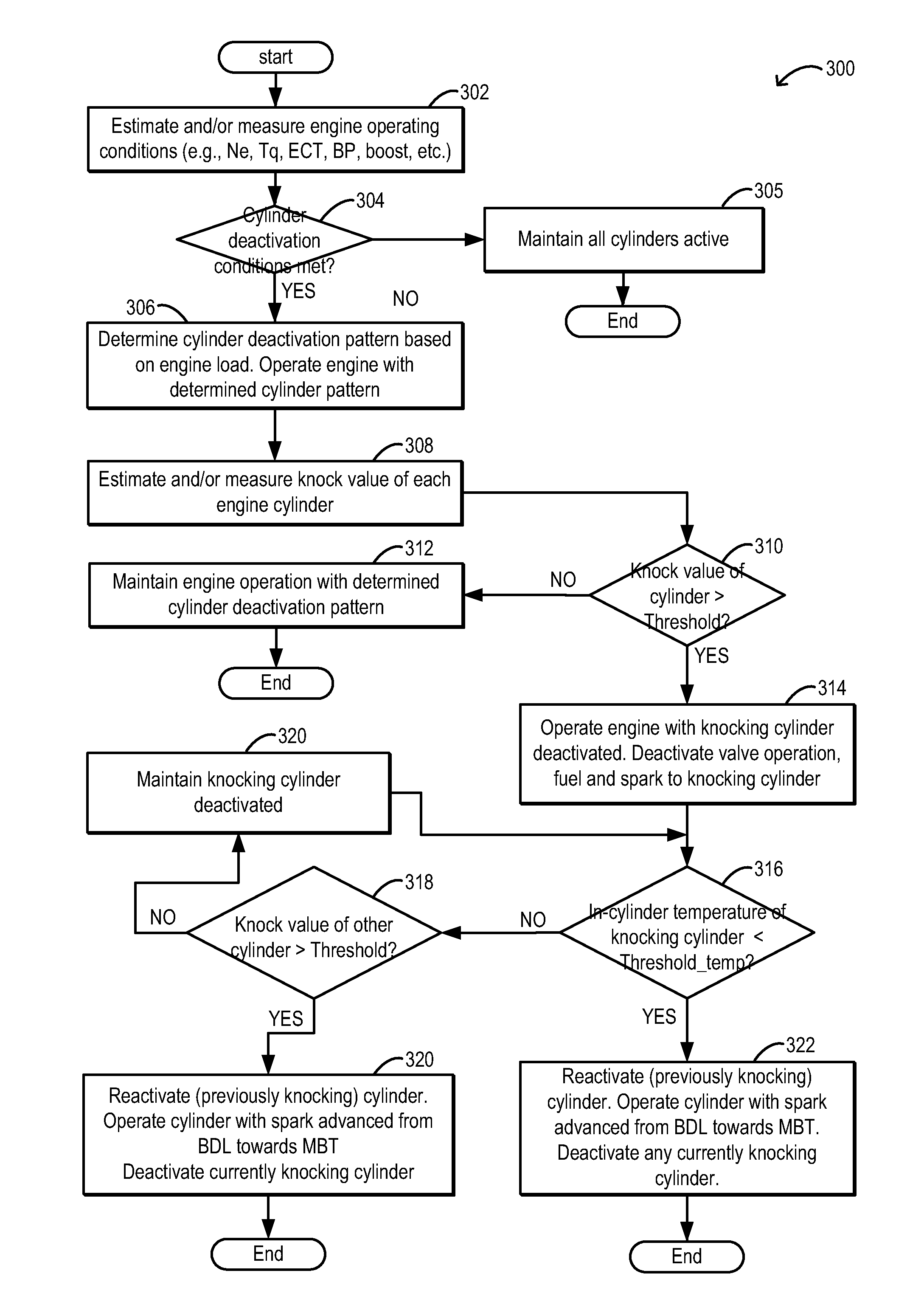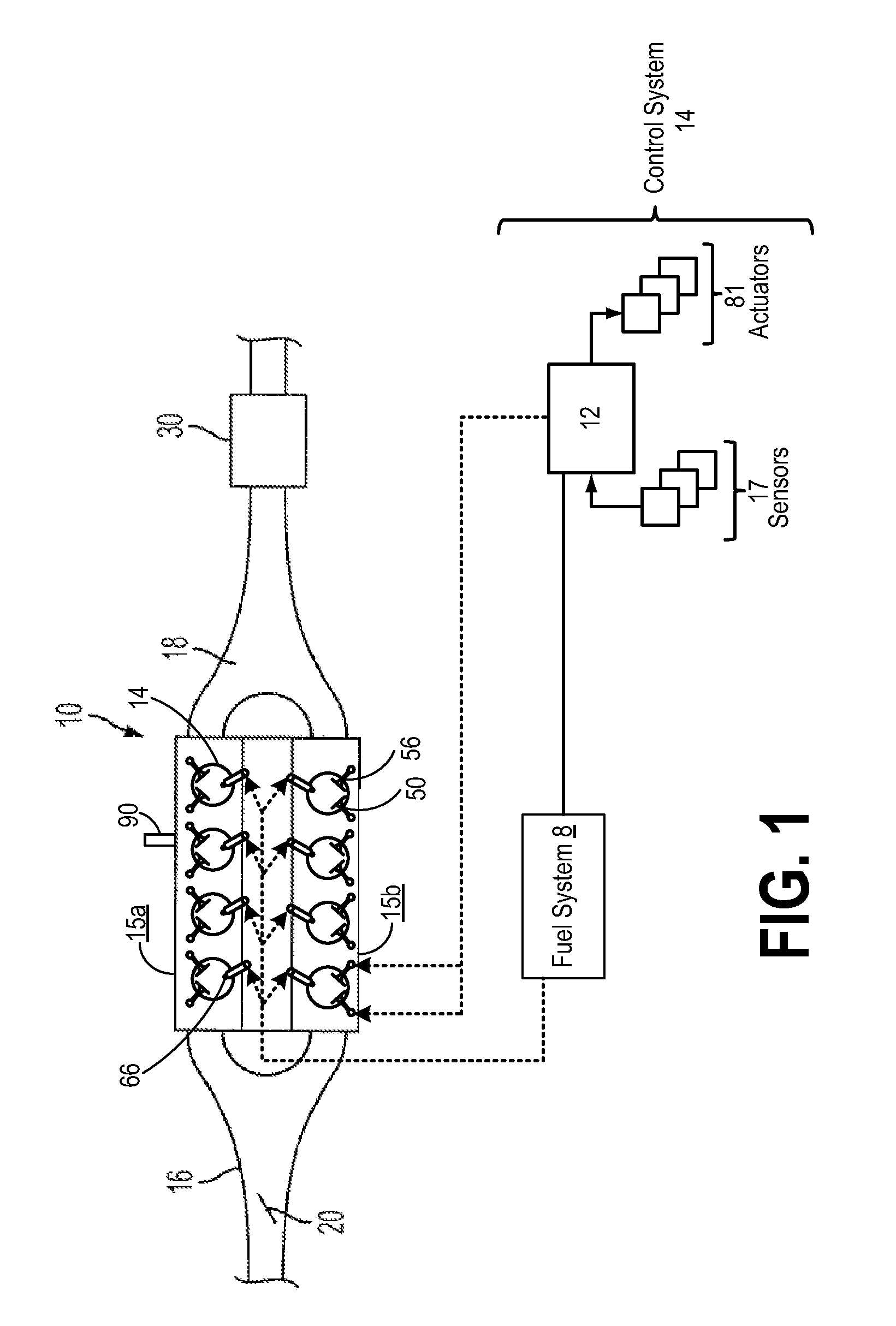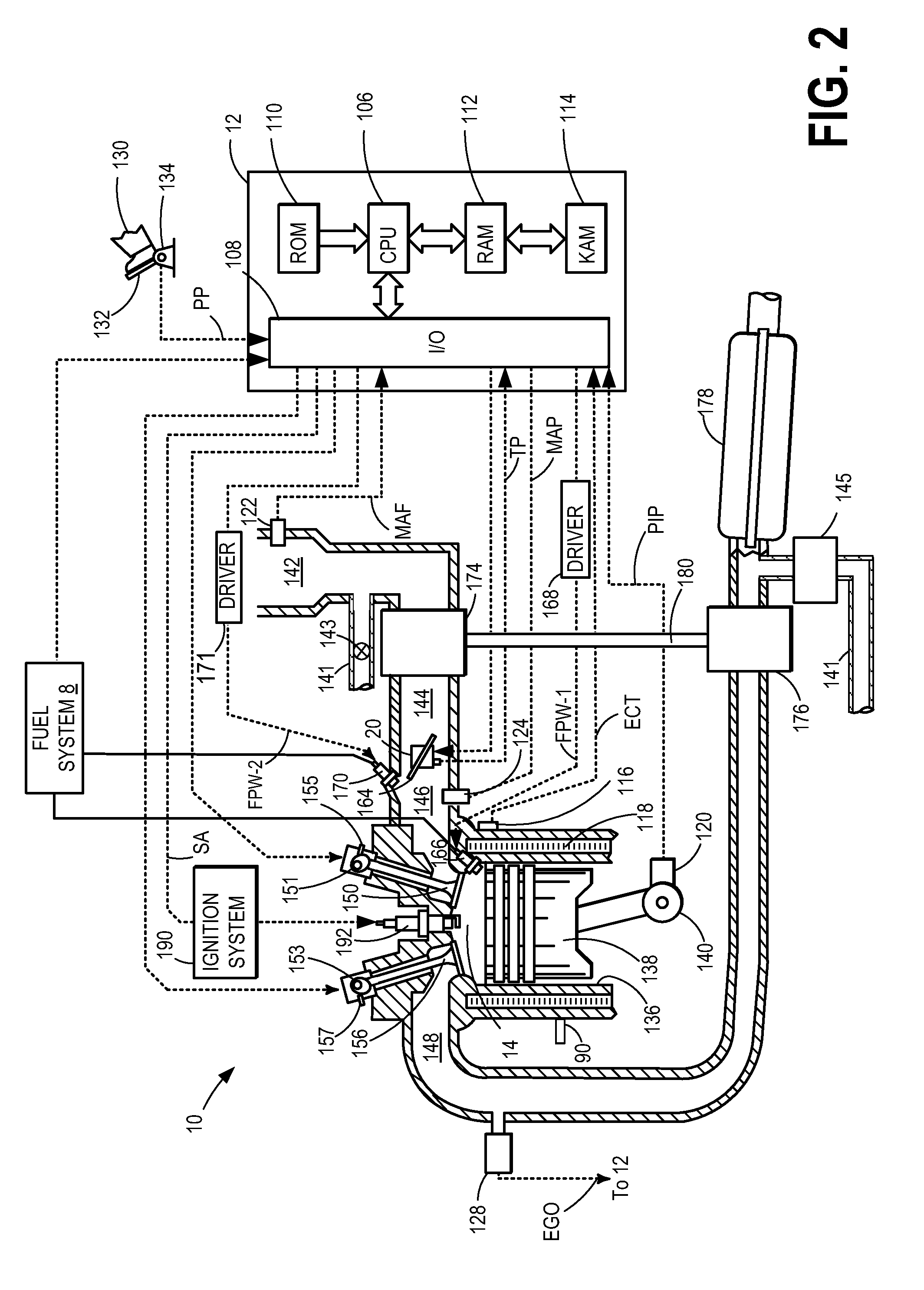If method and system for engine knock control
a technology of engine knocking and knocking, applied in the direction of electric control, ignition automatic control, machines/engines, etc., can solve the problems of cylinders being more prone to knocking than others, hotter cylinders may have a larger tendency to knock, and spark ignited internal combustion engines can encounter abnormal combustion events, etc., to achieve the effect of reducing engine torque output, reducing knocking tendency, and improving knocking tendency
- Summary
- Abstract
- Description
- Claims
- Application Information
AI Technical Summary
Benefits of technology
Problems solved by technology
Method used
Image
Examples
Embodiment Construction
[0012]Methods and systems are provided for adjusting a fuel injection profile when operating an engine configured for selective cylinder deactivation (herein also referred to as skip-fire operation), such as the engine system of FIGS. 1-2. A controller may select a skip-firing pattern responsive to cylinder knock indications. For example, the controller may be configured to perform routine, such as the routine of FIG. 3, to selectively deactivate a cylinder that is knocking at a higher rate for a duration until the cylinder cools down. Once the cylinder cools down, the cylinder may be reactivated while another cylinder that is now knocking is deactivated. An example adjustment of the cylinder pattern is shown with reference to FIG. 4. In this way, cylinder knock can be reduced while operating with less borderline limited spark.
[0013]FIG. 1 shows an example engine 10 having a first bank 15a and a second bank 15b. In the depicted example, engine 10 is a V8 engine with the first and se...
PUM
 Login to View More
Login to View More Abstract
Description
Claims
Application Information
 Login to View More
Login to View More - R&D
- Intellectual Property
- Life Sciences
- Materials
- Tech Scout
- Unparalleled Data Quality
- Higher Quality Content
- 60% Fewer Hallucinations
Browse by: Latest US Patents, China's latest patents, Technical Efficacy Thesaurus, Application Domain, Technology Topic, Popular Technical Reports.
© 2025 PatSnap. All rights reserved.Legal|Privacy policy|Modern Slavery Act Transparency Statement|Sitemap|About US| Contact US: help@patsnap.com



